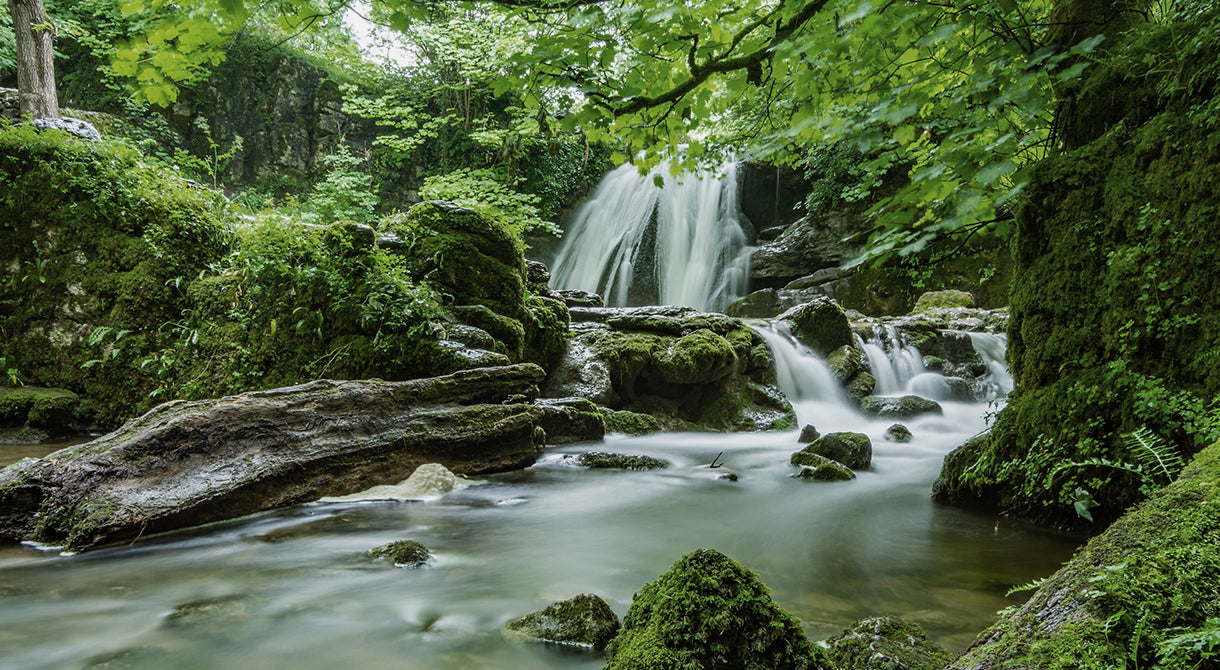The Art of Forest Bathing
This Japanese-inspired practice can help you to tap into the transformative power of nature to amp up your health, energy and creativity. Even if you don’t live near a forest.

Julia Plevin, the author of the new book The Healing Magic of Forest Bathing (Ten Speed Press), has always been an avid runner and nature lover. When a stint at design school in New York City sent her into serious withdrawal, she decided to write her thesis on “psychoterratica,” the mental health effects of being disconnected from nature. Since relocating to San Francisco, Plevin founded the 600-member Forest Bathing Club on meetup.com and has visited the oldest yakusugi tree in Japan and the Hoh Rainforest in Washington state. “Nature is a home to each of us,” she writes, “and forest bathing is a walk home.”
What does “forest bathing” mean?
The way I see it, forest bathing is the practice of intentionally connecting to nature as a way to heal. If you’ve ever taken a walk in the woods, you’ve felt the benefits of being outdoors. You breathe easier. Your racing thoughts slow down. It’s about awakening your senses and tapping into your wildness.
The term is based on the Japanese term shinrin-yoku, which was coined fairly recently, in 1982. But its essence goes back further, since much of Japanese culture is based in a deep understanding of and connection to nature – the concept of wabi-sabi, the beauty of imperfect and impermanent things, and the ancient Shinto traditions that honored sacred spirits they recognized in nature.
"Forest bathing is the practice of intentionally connecting to nature as a way to heal."
And now science has backed up these positive impacts?
Yes! We’re beginning to understand what happens on both a physical and subatomic level as we engage with nature. It’s been scientifically shown that spending time immersed in nature reduces stress and cortisol levels, decreases inflammation, boosts the immune system, improves mood, and increases the ability to focus. Some of the original studies from Japan were done on phytoncides, essential oils that trees and certain plants emit to protect themselves from predators. Breathing in these essential oils lowers cortisol levels and boosts our immune-enhancing killer cells. Research shows that just 15 minutes of being in nature can boost immunity for up to 30 days.

Sounds amazing. So how do you actually take a “bath”?
Above all, just get outside. Forest bathing is not a deep wilderness experience. It can happen anywhere. It could be a city park, if you can find a spot without too many people, or further afield like a wooded trail. It also doesn’t have to be physically extreme, and you want to be in an area where you feel safe and relaxed. If you decide to walk, just remember that there’s nowhere to go - the journey is the destination.
Then what do you do?
I suggest beginning with an intention: How do you want to feel? To relax, or to find clarity? Or maybe to play. Once you show up, take a few deep breaths. Shake off the stress of your daily life – literally! Then practice being present, experiencing nature through your senses. Close your eyes, allowing your other senses to open. What do you hear? What’s the closest sound? What do you smell, what can you touch? When we fully experience each moment through the senses, life’s colors and acoustics are magnified. Watch how a bird, a plant, or a stream exists in the moment. The formation of clouds in the sky, the exact weather, and the way the sun’s light hits the earth – all of these are unique to right now. If you’re in water you might cleanse your hands in it, or even walk through it. As you walk, feel the earth below your feet. Notice if it sparks any childhood memories. Because we are all born wild.
Anything we should prepare?
Footwear is important. I like to wear a soft-sole moccasin to feel the earth beneath my feet and to get the benefit of “earthing,” which studies have shown can help reduce inflammation and chronic pain, improve energy and sleep. Or take your shoes off. Bring water and snacks if you’re going to be out for a while.
"It’s about awakening your senses and tapping into your wildness.”

How often is ideal?
Like that study says, 15 minutes can make a big difference. My personal recommendation is to practice some form of nature connection every day. You can make it part of your morning ritual by picking a spot with your coffee and sit outside or look out the window for a few minutes. Once a week or so spend a couple of hours outdoors, and once every couple of months make it a day or a weekend.
How has the practice boosted your creativity as a designer?
For me, nature is the greatest artist, the greatest design engineer; so much innovation comes from nature and we have so much to learn from it. Nature also encourages us to play. In nature, I find it’s possible to have your best ideas, when you get out of your head and connect to something bigger than yourself.


